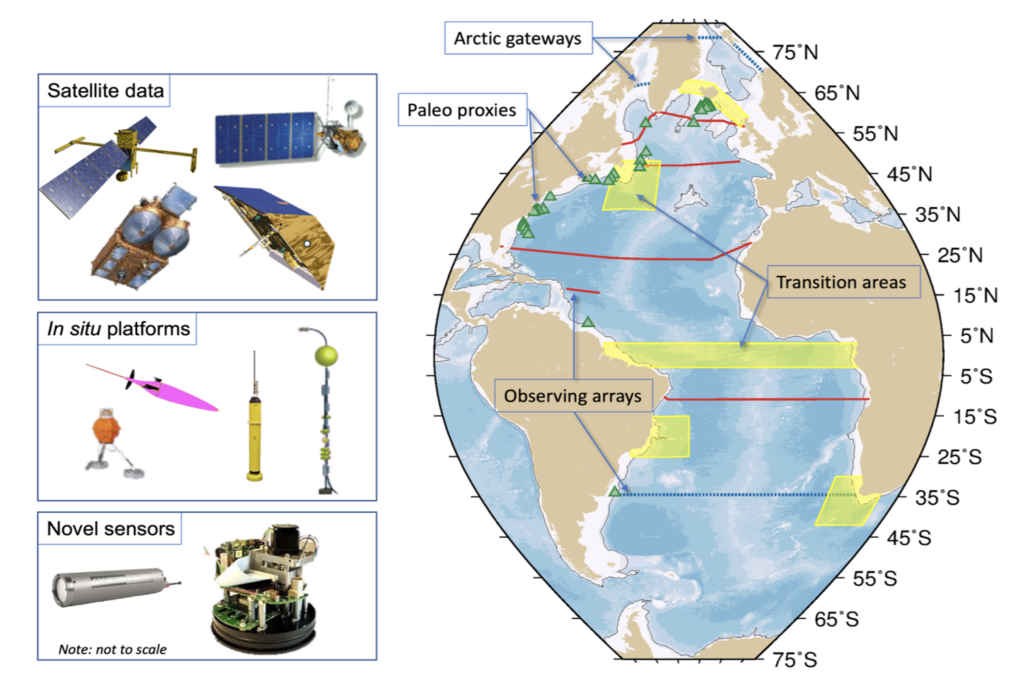Our work
Within EPOC, our guiding approach is to assess the mechanisms and processes of the AMOC, as a function of timescale and latitude/region, using high-resolution coupled models capable of better representing fine-scale ocean features and air-sea coupling, and exploiting comprehensive AMOC-related observational datasets to be generated. We focus on the geographic region from 35°S to the Arctic, considering the Arctic to be the ultimate headwaters of the AMOC and the latitude of 35°S as an open boundary to the Southern Ocean. Our temporal focus is on AMOC variability on human timescales (one year to one century, spanning 1850-2100), while for AMOC impacts we concentrate on decadal to multi-decadal fluctuations in the AMOC, based on the expectation that AMOC changes on these timescales generate more sustained climate impacts with greater societal relevance than shorter-timescale, reversible AMOC fluctuations. Impacts assessed will include much shorter duration extreme weather events, including, for example, changes in their frequency or intensity.
EPOC will re-evaluate ocean transport variability to explicitly address the question of how conveyor-like the great ocean conveyor really is, identifying processes responsible for maintaining or breaking connectivity, and the timescales at which the AMOC ‘switches’ from a set of local processes to a more conveyor-like phenomenon. This fundamental recasting of the AMOC – departing from a conveyor-like expectation and a single value for its strength – will transform current understanding of AMOC variability and its function in the Earth system, and lay the foundation for a more fit-for-purpose, effective and sustainable AMOC observing system.

